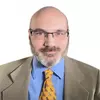How long do wearable cardiac monitors record data?
There has been a movement away from the older style wired Holter monitors and loop recorder event monitors over the past decade to small, wearable patch type remote monitoring devices. These newer, easier to use devices are also recording a lot more data than older systems and for longer periods of time.
Matthew Reynolds, MD, cardiac electrophysiologist at Lahey Hospital and Medical Center, briefly explains the length of time an outpatient cardiac ECG data monitoring devices are worn and the differences in the types of cardiac monitors. He was involved in the recent EXCALIBER and CAMELOT studies, which were the first large-scale studies of more than 300,000 patients using newer ambulatory cardiac monitoring (ACM) devices presented at the Heart Rhythm Society 2024 meeting.
There he discusses long-term continuous monitoring (LTCM) and mobile cardiac telemetry monitoring (MCT), which are also referred to as mobile cardiac outpatient telemetry (MCOT) by some vendors.
He said traditional Holter monitors are used up to 48 hours, but the LTCM category now ranges from three days up to 21 days. Reynolds said these devices were previously limited to 14 days.
"There is an ease of use argument that certainly you're getting more data from monitoring longer. Prior to the introduction of these LTCMs, you had a choice between a short-term continuous monitor, so up to 48 hours of continuous data, or long-term monitors that were really just looping recorders. These didn't have full disclosure, meaning they didn't capture everything. They only captured snapshots of the cardiac rhythm on a traditional event monitor. So an event monitor could be worn for 30 days, but you might only get a few minutes of data here and there," Reynolds explained.
By contrast, he added, the newer long-term continuous monitors capture everything that happens while the monitor is on.
This capability "provides a lot more detailed information," Reynolds said. "And it seems that it probably does increase the diagnostic yield compared to the alternatives. The growth in the long-term, continuous monitors segment of the ambulatory monitoring was quite steep and quite large. So it does appear that the newer types of monitors are, in many cases, replacing the older types, though not necessarily in all cases."
MCT devices are usually for acute patients who require close monitoring. They offer real-time monitoring via a connected cellular device so clinicians can get alerts when certain monitoring thresholds are met, facilitating immediate interventions. He said these devices are usually used to more rapidly discharge patients from the emergency department rather than admitting them just for observation and monitoring.
Data from the EXCALIBER study showed LTCMs making up 40% of the remote monitors being used, followed by MCTs at about 20%, and traditional event recorders and loop recorders shrinking to only about 10-15%.
